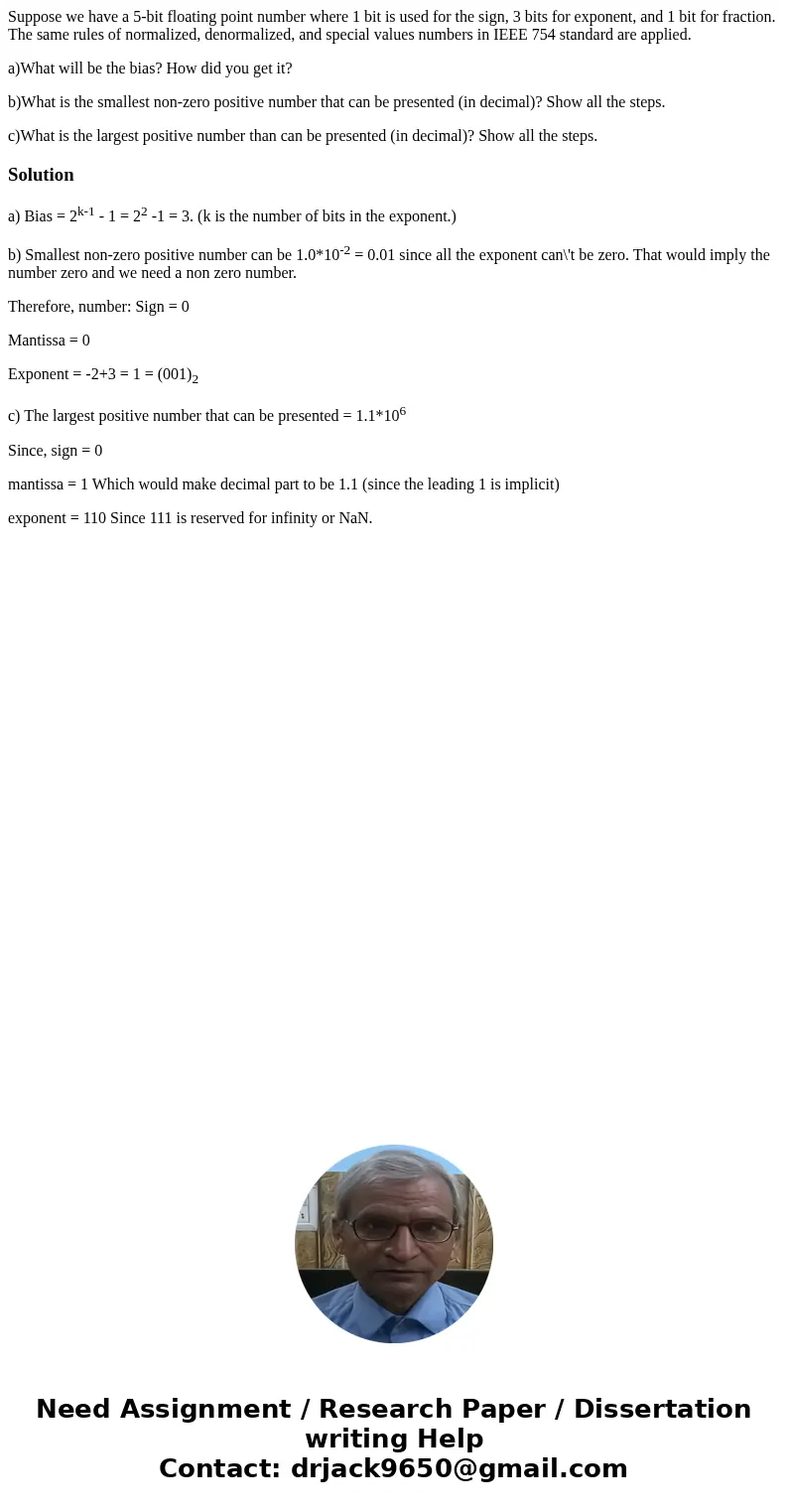Suppose we have a 5bit floating point number where 1 bit is
Suppose we have a 5-bit floating point number where 1 bit is used for the sign, 3 bits for exponent, and 1 bit for fraction. The same rules of normalized, denormalized, and special values numbers in IEEE 754 standard are applied.
a)What will be the bias? How did you get it?
b)What is the smallest non-zero positive number that can be presented (in decimal)? Show all the steps.
c)What is the largest positive number than can be presented (in decimal)? Show all the steps.
Solution
a) Bias = 2k-1 - 1 = 22 -1 = 3. (k is the number of bits in the exponent.)
b) Smallest non-zero positive number can be 1.0*10-2 = 0.01 since all the exponent can\'t be zero. That would imply the number zero and we need a non zero number.
Therefore, number: Sign = 0
Mantissa = 0
Exponent = -2+3 = 1 = (001)2
c) The largest positive number that can be presented = 1.1*106
Since, sign = 0
mantissa = 1 Which would make decimal part to be 1.1 (since the leading 1 is implicit)
exponent = 110 Since 111 is reserved for infinity or NaN.

 Homework Sourse
Homework Sourse